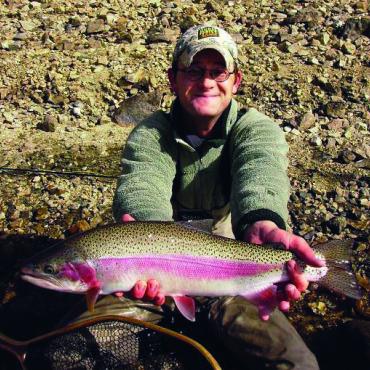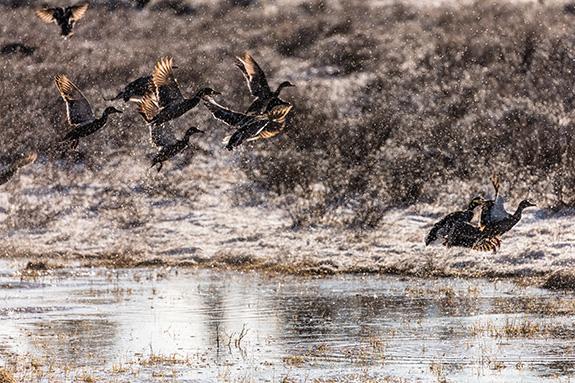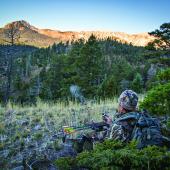Duck It
Hunting for Donald and Daffy.
Growing up in southwest Montana, duck hunting wasn’t something any of my sporting mentors seriously pursued. I did, however, and I had at my disposal a stack of hook-and-bullet magazines, half-a-dozen garage-sale decoys, a borrowed canoe, a good buddy who was as crazy as I was, and a can-do attitude. As luck would have it, my aforementioned pal and I also had access to a small farm pond that was a magnet for early-season ducks. Due to the location of this particular pond, we could be out of school and in our straw-bale blind with a solid amount of time for a decent mixed bag of ducks before the end of shooting light.
As the season progressed and the overnight temperatures began to drop, our honey hole produced much less honey. We were forced to pursue waterfowl on the weekends with the canoe and my crappy two-wheel drive Nissan pickup on the only open water available: the rivers. Two teenage boys, a sixteen-foot canoe, unpredictable rivers, two 12-gauge shotguns, a less than reliable automobile, and sub-freezing temperatures… what could possibly go wrong?
By sheer luck nothing catastrophic befell us. In retrospect, I believe it was because we were exceedingly cautious, not for our own personal safety mind you, but because shells were expensive and neither one of us had access to a proper dog. We never shot over swift water, and since our decoy spread was so small, we were forced to keep things tight. We always managed to retrieve our birds by hand, with a stick, or using a long-handled landing net. At the time I didn’t know it, but those early days helped to make me into a relatively decent duck hunter, although the dogs I have known might beg to differ.
Habitat
Ducks are waterfowl. Therefore, they tend to live in, on, or around the direct vicinity of water. In Montana our water comes mainly from two sources: mountain snowpack and spring rainfall. If the conditions are right, the pothole lakes, ponds, and sloughs of the northern part of the state, most notably those areas along the Hi-Line, will provide quality nesting habitat, and overall duck numbers will be good during the early season. Hence the overconfident attitude my buddy and I had when forced from the pond and onto the rivers. Come November, local ducks have moved south, and those passing through are more likely to have toughed it out as long as they could in the potholes and lakes of southern Canada.
Fortunately, this particular section of Montana happens to be home to the headwaters of the Missouri river, a major artery, pumping fresh water directly southward into the Mississippi, and then onward toward the Gulf of Mexico. Ducks are hardwired to know this and late-season migrants flock to the headwaters of the Mighty Mo and its tributaries. Much the same can be said for the Yellowstone, with its numerous spring-fed tributaries and abundance of agricultural fields that provide much-needed forage for ducks on their long journey south. These big rivers provide a resting point for ducks, and as lakes and ponds freeze, rivers are often the only areas of open water along the migration route.
Behavior
Whoever coined the term “bird-brain” to connotate stupidity was obviously not a duck hunter. If an individual duck makes it from a cute downy yellow fluff-ball to an adult, it has survived the equivalent of six combat tours, the majority of which were unarmed and flightless. The vision of the average duck is on par with that of the wild turkey, goose, or eagle. Just as ravens and magpies learn to use traffic patterns to optimize feeding time on roadkill, ducks will quickly shy away from decoy spreads and blinds that even hint toward something unnatural. This becomes even more apparent as the season progresses. Staying hidden is only half the battle; hunkering down and toughing it out is usually the best play. If the weather is good, the duck hunting usually isn’t. Be in your blind well before sun-up and come prepared to wait—get comfortable being uncomfortable. Just like any other type of hunting, patience and discipline are the keys to success.
Gear
Duck hunting is one of those outdoor pursuits that can be overwhelmingly gear-intensive. However, if you’re savvy, it doesn’t have to be. Duck hunting “stuff” falls into two categories: “must-haves” and “nice-to-haves.” It goes without saying that a good, reliable 12-gauge shotgun is in the must-have column. There have been so many words written about the selection and choice of the ideal ducking gun that I will not delve into it here. For the average hunter, an off-the-rack, long-barreled, full-choked, Remington 870 Express is most likely the best choice. If you plan to hunt late into the season, stay clear of autoloaders—sub-zero temperatures and moisture-rich environments can cause these guns to jam. A high-quality pair of waders is also a necessity, especially if you don’t own a retrieving dog. Camouflage clothing is another key element to any duck-hunting kit. When it comes to clothing, make sure that layers are suitable for early- and late-season conditions, and that the camo patterns will blend in with a wide variety of vegetation as the season changes. In the nice-to-have column lie decoys, calls, a canoe, and a blind or blind-making material. These are all things that can make the duck-hunting process a bit easier, and potentially more successful.
Regs
When it comes to waterfowl regulations, it’s important to note that the U.S. Fish and Wildlife Service, not Montana FWP, sets seasons and bag limits. Montana also happens to be unique in the fact that the state is divided by two different flyways. Careful study of the regulations is essential. What is legal on the Missouri may not be legal on the Yellowstone, and bag limits can vary by species. Make sure you can identify your quarry in the air before you pull the trigger.
Kurt Dehmer owns Durty Kurty’s guide service in Bozeman.











